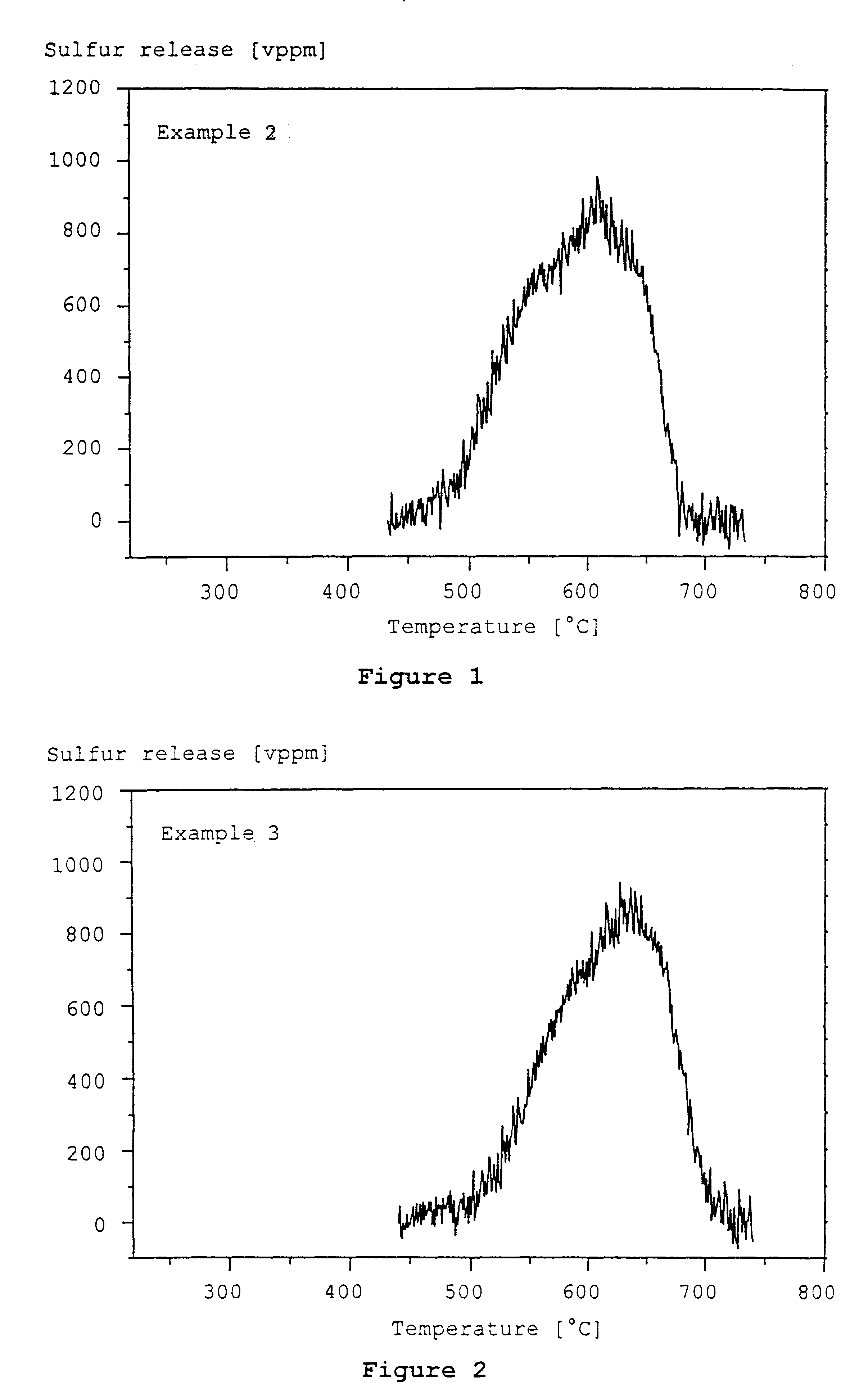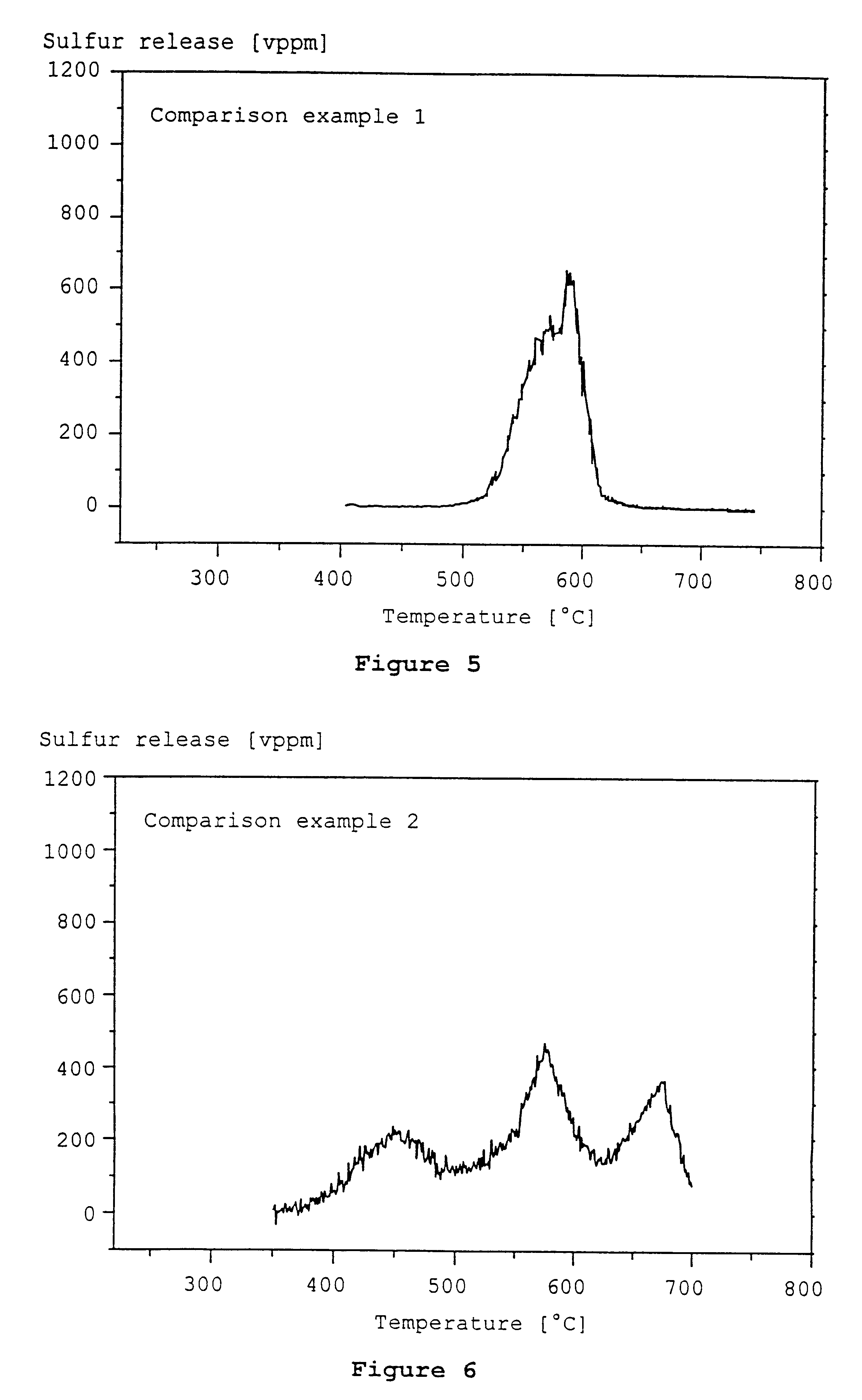Storage material for sulfur oxides
- Summary
- Abstract
- Description
- Claims
- Application Information
AI Technical Summary
Benefits of technology
Problems solved by technology
Method used
Image
Examples
example 2
An aqueous dispersion of .gamma.-Al.sub.2 O.sub.3 (specific surface area 140 m.sup.2 / g, particle size d.sub.50 =4 .mu.m) and Mg / Al hydrotalcite (particle size d.sub.50 =4 .mu.m) was prepared with a weight ratio of Mg / Al hydrotalcite to .gamma.-Al.sub.2 O.sub.3 of 14:3. The Mg / Al hydrotalcite used had a molar ratio MgO / Al.sub.2 O.sub.3 of 2.6. It was calcined in air in a pre-treatment at 550.degree. C. for the duration of 4 hours and transferred thereby into the storage material of the invention. Thereafter, the material still had a specific surface area of 200 m.sup.2 / g (hydrotalcite II of Example 1).
Several honeycomb bodies of cordierite with a cell density of 62 cm.sup.-2 and a volume of 0.8 liters were coated by immersion in this dispersion with a total of 170 g dry mass per liter of honeycomb body volume (140 g / l hydrotalcite and 30 g / l .gamma.-Al.sub.2 O.sub.3). The coating was dried at 120.degree. C. and calcined in air for 2 hours at 500.degree. C. The coated honeycomb bodi...
example 3
A sulfur trap prepared in Example 2 was loaded with 10 g calcium oxide per liter volume of the sulfur trap by immersion in an aqueous solution of calcium nitrate, drying at 120.degree. C. and calcining in air at 500.degree. C.
example 4
Another sulfur trap prepared in Example 2 was loaded with 17.5 g strontium oxide per liter by immersion in an aqueous solution of strontium acetate, drying at 120.degree. C. and calcining in air at 500.degree. C.
PUM
| Property | Measurement | Unit |
|---|---|---|
| Length | aaaaa | aaaaa |
| Length | aaaaa | aaaaa |
| Time | aaaaa | aaaaa |
Abstract
Description
Claims
Application Information
 Login to View More
Login to View More - R&D
- Intellectual Property
- Life Sciences
- Materials
- Tech Scout
- Unparalleled Data Quality
- Higher Quality Content
- 60% Fewer Hallucinations
Browse by: Latest US Patents, China's latest patents, Technical Efficacy Thesaurus, Application Domain, Technology Topic, Popular Technical Reports.
© 2025 PatSnap. All rights reserved.Legal|Privacy policy|Modern Slavery Act Transparency Statement|Sitemap|About US| Contact US: help@patsnap.com



